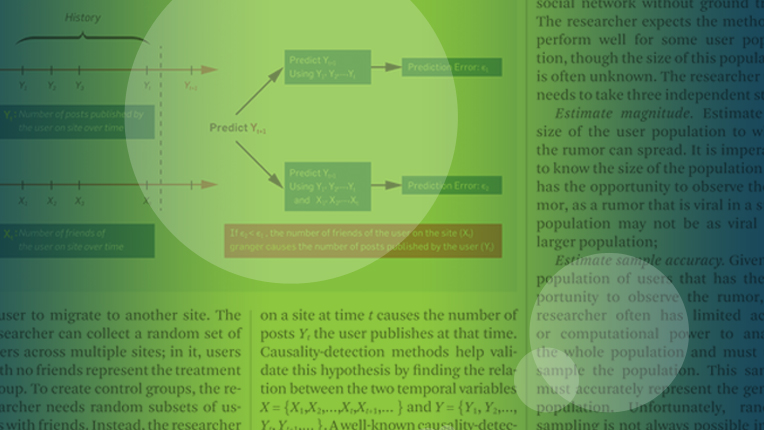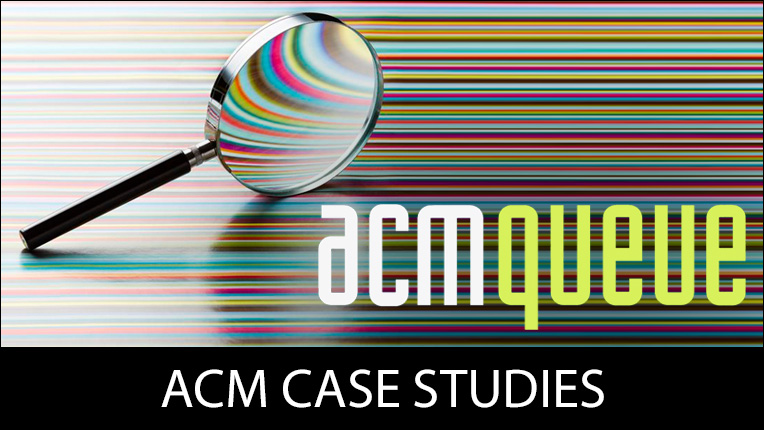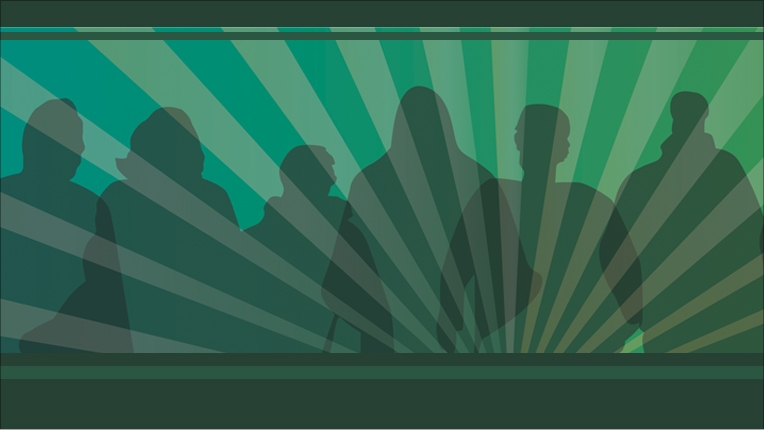ACM at a Glance
Welcome to the Association for Computing Machinery
Introduction
ACM, the Association for Computing Machinery is the world’s largest educational and scientific computing society, uniting educators, researchers and professionals to inspire dialogue, share resources and address the field’s challenges. ACM strengthens the computing profession’s collective voice through strong leadership, promotion of the highest standards, and recognition of technical excellence. ACM supports the professional growth of its members by providing opportunities for life-long learning, career development, and professional networking.
With nearly 100,000 members from more than 190 countries, ACM works to advance computing as a science and a profession.
Origins
The Association for Computing Machinery was founded as the Eastern Association for Computing Machinery at a meeting at Columbia University in New York on September 15, 1947. Its creation was the logical outgrowth of increasing interest in computers as evidenced by several events, including a January 1947 symposium at Harvard University on large-scale digital calculating machinery; the six-meeting series in 1946-47 on digital and analog computing machinery conducted by the New York Chapter of the American Institute of Electrical Engineers; and the six-meeting series in March and April 1947, on electronic computing machinery conducted by the Department of Electrical Engineering at Massachusetts Institute of Technology. In January 1948, the word "Eastern" was dropped from the name of the Association. In September 1949, a constitution was instituted by membership approval.
Scope
The original notice for the September 15, 1947, organization meeting stated in part:
The purpose of this organization would be to advance the science, development, construction, and application of the new machinery for computing, reasoning, and other handling of information.
The first and subsequent constitutions for the Association have elaborated on this statement, although the essential content remains. The present constitution states:
The Association is an international scientific and educational organization dedicated to advancing the art, science, engineering, and application of information technology, serving both professional and public interests by fostering the open interchange of information and by promoting the highest professional and ethical standards.
Membership
ACM membership is drawn from all sectors of the computing sciences and their applications, from the design and construction of computers to the development of appropriate programming theory and languages and the utilization of computers in scientific investigation, industrial control, management data processing, and the humanities.
Originally, membership in ACM was open to all interested in the purposes of the Association. In 1966, ACM adopted grades of membership, which currently include "Professional Member" and "Student Member." Eligibility for these grades is defined as follows:
- Professional Members are those who subscribe to the purposes of the Association and satisfy one of the following qualifications: 1. Bachelor's Degree; 2. Equivalent level of education; or 3. Two years full-time employment in the IT field.
- Student Members are those who subscribe to the purposes of the Association.
Institutional memberships for companies and universities were introduced in 1960.
Organization
ACM is governed by a Council consisting of 16 members and is the highest governing authority in ACM. The Council is composed of the president, vice president, secretary/treasurer, the immediate past president, the Special Interest Group Governing Board (SGB) chair, three SGB council representatives, the publications board chair, and seven members-at-large. The president, vice president, and secretary/treasurer are elected to two-year terms by the members; the chair of the Publications Board is elected to a three-year term by the Council; and members-at-large are elected to two-year terms by members. The Council meets two times per year and the Executive Committee meets as necessary.
The headquarters office houses a staff of approximately 75 persons under the supervision of the chief executive officer (CEO). The staff performs necessary organization functions (membership, accounting, subscription fulfillment, etc.); coordinates and supports the activities of ACM chapters and committees; provides membership services (Online Books & Courses programs, Career & Job Center, etc.); acts as a liaison for meetings sponsored by the Association; and produces ACM periodicals. It serves as an information center for members, news media, and the general public on a diversity of subjects in the general area of computers and their applications.
Five boards, comprising numerous volunteer committees and subgroups, work together with the headquarters staff to manage ACM's products and services. These boards are: the Publications Board, Special Interest Group (SIG) Governing Board, Education Board, Membership Board, and Professions Board.
Meetings
ACM and the ACM Special Interest Groups (SIGs) sponsor, co-sponsor and cooperate with more than 170 technical meetings annually. Because ACM provides an objective arena for the discussion of novel and often competing ideas, many of these conferences have become premier world events.
ACM Special Interest Groups
ACM's Special Interest Groups (SIGs) in 37 distinct areas of information technology address varied interests: programming languages, graphics, computer-human interaction, and mobile communications, to name a few. Each SIG organizes itself around those specific activities that best serve both its practitioner- and research-based constituencies. Many SIGs sponsor conferences and workshops and offer members reduced rates for registration and proceedings. SIGs also produce newsletters and other publications or support lively e-mail forums for information exchange.
Publications
ACM publishes, distributes and archives original research and firsthand perspectives from the world's leading thinkers in computing and information technologies that help computing professionals negotiate the strategic challenges and operating problems of the day. ACM publishes 50+ journals and magazines, more than 30 newsletters and 85+ conference proceedings annually. ACM is also recognized world-wide for its published curricula recommendations, both for colleges and universities and for secondary schools that are increasingly concerned with preparing students for advanced education in the information sciences and technologies.
ACM's flagship publication, Communications of the ACM, is the leading print and online magazine for the computing and information technology fields. Industry leaders use Communications as a platform to present and debate various technology implications, public policies, engineering challenges, and market trends.
The ACM Queue website features straight-forward, no-nonsense content that focuses on the problems that lie just ahead for practicing software engineers, and features blogs, online discussions and debates with experts, video and audio content, and much more.
The ACM Digital library contains over 2 million pages of text, with full-text articles from ACM publications dating back to the 1950s, plus third-party content with selected archives, representing all of ACM's journals, newsletters, and proceedings. Each citation contains links to other works by the same author; clickable references to their original sources; links to similar articles and critical reviews, if available; and digital object identifiers (DOIs) to easily manage electronic linkages to vendors.
The ACM Online Guide to Computing Literature consists of a bibliographic database of over 1 million bibliographic citations, dating back to 1985. These citations come from a broad range of information technology publications and publishers. Many of these citations contain abstracts and/or reference sections as well. The books database, for example, contains citations to some 400,000 volumes, with links to commercial vendors that facilitate online purchasing.
Chapters
ACM Professional Chapters and Local SIG (Special Interest Group) Chapters unite colleagues in particular geographical areas, offer the opportunity to gain immediate access to technological advances, and establish a personal networking system in the locale. There are currently approximately 200 ACM Professional and Local SIG Chapters worldwide, over 50 percent of which are outside the U.S. The chapters host lectures by internationally known computer professionals, sponsor state-of-the-art seminars on the most pressing issues in information technology, conduct volunteer training workshops, and publish informal newsletters.
ACM has established Student Chapters to provide an opportunity for students to play a more active role in the Association and its professional activities. More than 800 colleges and universities throughout the world participate in the ACM Student Chapter Program, whose aims are to enhance learning through exchange of ideas among students, and between established professionals and students. By encouraging organization of student chapters on college and university campuses, the Association is able to introduce students to the benefits of a professional organization. These benefits include periodic meetings, which encourage and enhance learning through the exchange of ideas among students, and between established professionals and students.
Student Chapter members may take advantage of the activities and services provided by the Association such as the Distinguished Speakers Program, the International Collegiate Programming Contest, the Student Research Competition, and the Publications Program. Student chapters provide an obvious setting to develop and demonstrate leadership capabilities—an important factor both to students in career development and professional growth, as well as to the future of the Association.
Awards
ACM recognizes excellence through its eminent series of awards for outstanding technical and professional achievements and contributions in computer science and information technology. ACM sponsors eight major awards, named for the foremost luminaries in the computing field, as well as several other awards that honor distinguished service in information technology. It also names as Fellows each year those outstanding members who have demonstrated achievements in computer science and information technology, and who have made significant contributions to the ACM's mission. The Distinguished Member grade recognizes those ACM members with professional experience and continuous professional membership who have achieved significant accomplishments or have made a significant impact on the computing field.
ACM's most prestigious technical award, named for A.M. Turing, a pioneer in the computing field, is accompanied by a prize of $1 million. It is given to an individual selected for contributions of a technical nature made to the computing community. The contributions should be of lasting and major technical importance to the computer field.
The ACM Prize in Computing (formerly the ACM-Infosys Foundation Award in the Computing Sciences) recognizes personal contributions by young scientists and system developers for innovations representing great achievements in the discipline. The award carries a prize of $250,000.
Professional and Public Service Activities
Many of ACM's professional and public service activities of are conducted by standing committees. Examples include Computers and Public Policy, Constitution and Bylaws, Nominating, Elections, USACM Public Policy, Committee on Professional Ethics, and ACM International Collegiate Programming Contest.
ACM is committed to bringing potentially significant technical and public policy issues to the attention of the ACM membership and community. It sponsors several committees to address these issues, including: ACM-W, supporting women in computing; the Committee on Computers and Public Policy; and the Technology Policy Counicl, which works to inform policymakers and the public in understanding information technology issues, and to advance a policy framework that supports innovations in computing and related disciplines.
Conclusion
As the world’s largest educational and scientific computing society, ACM delivers resources that advance computing as a science and a profession. ACM provides the computing field's premier Digital Library and serves its members and the computing profession with leading-edge publications, conferences, and career resources.
Since its inception, ACM has provided quality content and information, community building, reliability and global vision to its members. It is this unique role that makes ACM the leading resource for advancing the skills of computing professionals and for interpreting the impact of information technology on society.
Publish with ACM
ACM's prestigious conferences and journals seek top-quality papers in all areas of computing and IT. It is now easier than ever to find the most appropriate venue for your research and publish with ACM.

ACM Case Studies
Written by leading domain experts for software engineers, ACM Case Studies provide an in-depth look at how software teams overcome specific challenges by implementing new technologies, adopting new practices, or a combination of both. Often through first-hand accounts, these pieces explore what the challenges were, the tools and techniques that were used to combat them, and the solution that was achieved.

